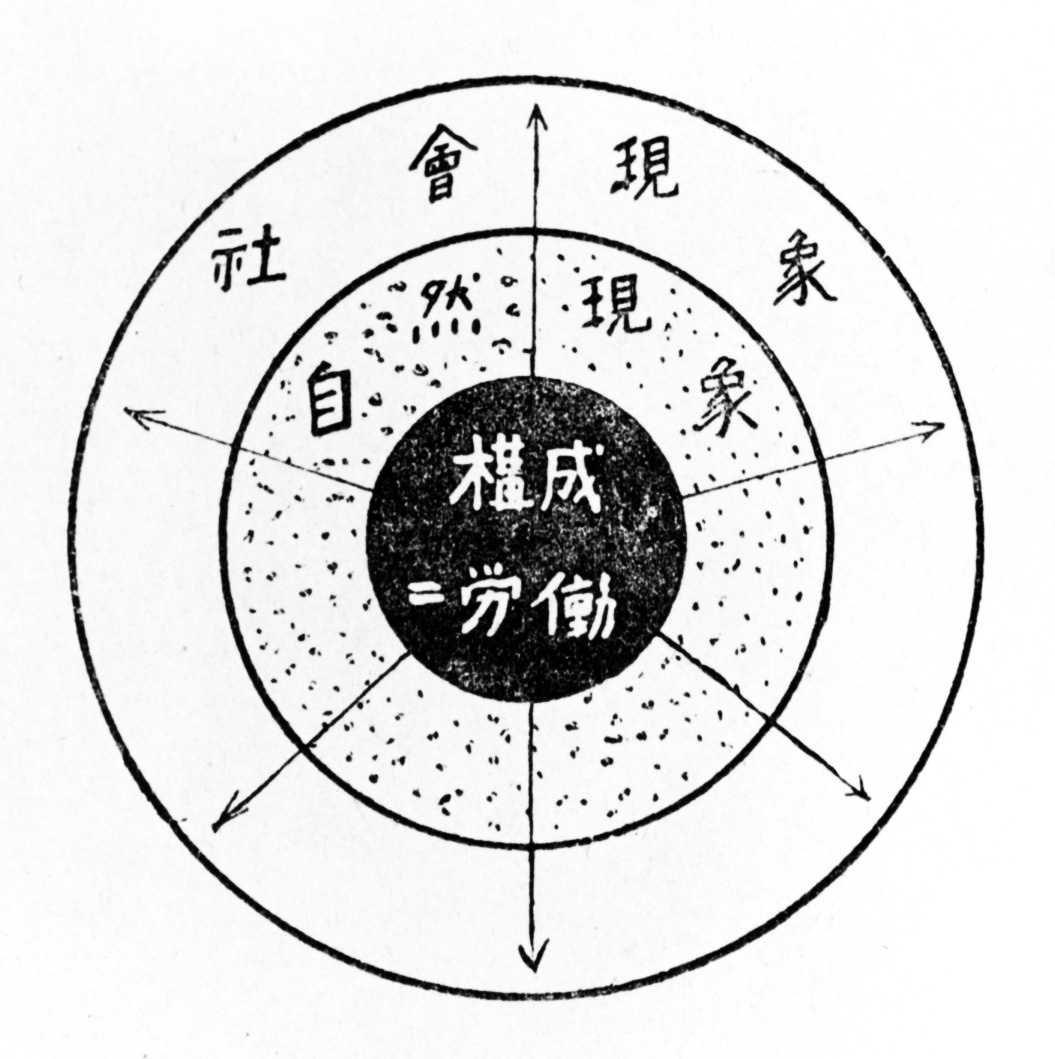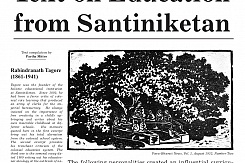Lena Bergner (1906–81) studierte von 1925 bis 1930 am Bauhaus in Dessau. 1929 schloss sie ihr Studium als Weberin mit einer Gesellenprüfung ab, und 1930 folgte der Abschluss mit dem Bauhaus-Diplom. Neben den Vorkursen bei Josef Albers und László Moholy-Nagy sowie weiteren Kursen bei Oskar Schlemmer und Joost Schmidt, besuchte sie sowohl den für alle Studierenden obligatorischen Formunterrichtvon Paul Klee als auch die theoretischen Kurse, die er speziell für die Weberei abhielt. Nach der Ausbildung am Bauhaus übernahm sie die Leitung der „Ostpreußischen Handweberei“ in Königsburg, bis sie 1931 dem ehemaligen Direktor des Bauhauses, Hannes Meyer, nach Moskau nachreiste. Dort begann sie als „Ingenieur-Künstlerin“ in der Zeichenabteilung einer Fabrik für Jacquard-Möbelstoffe tätig zu sein. Wegen den beginnenden Säuberungen verließ Lena Bergner mit ihrem Ehemann Hannes Meyer 1936 Russland in Richtung Schweiz. Nach einer Reise durch die USA und Mittelamerika folgte Bergner 1939 der Berufung als Professorin an das Staatliche Textilinstitut in Mexiko, wohin sie Hannes Meyer begleitete. Bis zu ihrer endgültigen Rückkehr in die Schweiz im Jahr 1949 arbeitete sie in Mexiko als Weberin an verschiedenen Projekten, die leider zum Teil nie verwirklicht wurden. So hielt sie von der Regierung den Auftrag, in der Region von Ixmiquilpan einen Plan zur Entwicklung der Handweberei auszuarbeiten, die der einheimischen Otomí-Bevölkerung erlauben würde, ihre Einnahmen durch die Landwirtschaft mit Textilproduktion aufzustocken. Da bei allen ihren beruflichen Tätigkeiten die künstlerischen Ziele eine weniger wichtige Rolle spielten als die gesellschaftspolitischen, kamen die am Bauhaus angeeigneten gestalterischen Fähigkeiten weniger stark zum Ausdruck. Es sind daher kaum textile Arbeiten von Lena Bergner überliefert.

Lena Bergner, Teppichentwurf, Zentrum Paul Klee, Bern, Inv. Nr. LM-B6/11, © Erben nach Lena Bergner.

Lena Bergner, Negativer Silbergelatineabzüge mit Illustrationen aus Klees Unterricht, Zentrum Paul Klee, Bern, Inv. Nr. LM-B4/07N und LM-B6/12, © Erben nach Lena Bergner.
Ihre Mitschriften aus dem Bauhaus-Unterricht sind dagegen ein außerordentlich anschauliches Zeugnis davon, was Paul Klee in seiner „Theory of Configuration Form“ und im Formunterricht der Weberei lehrte. Seine Vorlesungen waren rein theoretisch.1 Er sprach nicht über die praktische Umsetzung oder über Material und Technik, die die Weberinnen bei ihrer Arbeit benützten. Dafür war Gunta Stölzl, die Leiterin der Werkstatt, verantwortlich. Außer den Vorlesungen fanden von Zeit zu Zeit, so Bergner, Besprechungen der Weberinnen statt, bei denen – womöglich nach dem Vorbild der Vorkurs-Gespräche – die ausgeführten Stoffe unter der Leitung von Klee kritisch betrachtet wurden.2

Lena Bergner, Reinschrift von Klees Unterricht, Zentrum Paul Klee, Bern, Inv. Nr. LM-B 1/08, © Erben nach Lena Bergner.
Überlieferte Mitschriften von Studierenden, wie denen von Lena Bergner, erlauben eine Rekonstruktion bestimmter Semester von Klees theoretischem Unterricht.3 Denn im Gegensatz zur Weimarer Zeit, die in datierten Vorlesungen überliefert ist,4 verzichtete Klee in Dessau auf ausführliche Notizen. Hier entstanden viele Aufzeichnungen mit geometrischen Skizzen und wenig Text. Wie Lena Bergner berichtete, zeichnete Klee diese Vorlagen an die Wandtafel und gab kurze Erläuterungen dazu: „Klee redete sehr wenig. Wir kopierten diese Skizzen, die die Grundlage bildeten für Aufgaben, die wir dann zu Hause auszuführen hatten.“5 Wegen seiner oft allzu kurzen Erläuterungen bekundeten einige Studierende Mühe, die volle Bedeutung seiner Gedanken zu erfassen. Wieder andere Schülerinnen, wie beispielsweise Helene Schmidt-Nonne, bezeichneten seinen Unterricht hingegen als sehr sachlich und gründlich. Im Laufe der Zeit passte er die Thematik der Vorlesungen den Gegebenheiten an.6 Da er 1928 und 1929 Studierende in verschiedenen Semestern unterrichtete7, überschnitten sich die Vorlesungen und Aufgaben in den Kursen der Grundlehre und des theoretischen Unterrichts für die Weberei.
In seinem Unterricht behandelte Klee, wie Lena Bergner zusammenfasste, die Gesetzmäßigkeit der Fläche an sich sowie die Beziehungen der Formen und Farben zueinander. Doch was war darunter zu verstehen? Darüber geben die rund 3900 Unterrichtsnotizen von Paul Klee, die seit 2013 online als Faksimile und Transkriptionen zur Verfügung stehen8, sowie Lena Bergners Mitschriften und Übungen, die sich im Archiv des Zentrum Paul Klee befinden, Auskunft.
Klees Unterricht begann mit einem allgemeinen Teil, in dem er die Principelle Ordnung (I.2) der bildnerischen Elemente: Punkt, Linie und Fläche und der bildnerischen Mittel: Linie, Schwarzweiss und Farbe erklärte. Im Gegensatz zur ruhigen, prinzipiellen Ordnung werden die bildnerischen Elemente und Mittel in der Specielle Ordnung (I.3) bewegt. Klees Lehre gründete auf der Idee, dass nur durch Bewegung eine lebendige und somit interessante Gestaltung entstehen konnte. Die Bewegung könne, so Klee, aufgrund unterschiedlicher Verfahren wie beispielsweise Verschiebung, Spiegelung, Drehung oder Überlagerung erfolgen. Vor allem im Kapitel I.4 Gliederung ging Klee auf verschiedene Verfahren ein, wie eine Fläche rhythmisiert werden konnte. Mit seiner Lehre wollte er seinen Studierenden zeigen, wie sie aus dem Arbeitsprozess heraus die Fläche strukturieren und neue Formen entwickeln konnten.

Lena Bergner, Übung zu Schiebung, Spiegelung und Drehung, Zentrum Paul Klee, Bern, Inv. Nr. LM-B6/13, © Erben nach Lena Bergner.
Das zweite, sehr umfangreiche Kapitel ist der Gestaltung der Fläche, der sogenannten Planimetrischen Gestaltung, gewidmet. Dabei handelt es sich vorwiegend um geometrische Zeichnungen. Im ersten Unterkapitel (II.5 Wege zur Form) erklärt Klee die Wege, auf welchen die Elementarformen Kreis, Dreieck und Quadrat entstehen. Bewegung und Spannung spielen dabei die Hauptrollen. Danach analysiert er die innere Konstruktion der Elementarformen (Vgl. Notizen in II.6 Elementarform mit Bergners Illustrationen, Abb. 1, z.B. die innenschematische Darstellung des Dreiecks in II.6/132 und bei Bergner in der Mitte des Blattes).
In den nächsten Kapiteln spielt er verschiedene Kombinationsmöglichkeiten der Elementarformen – wie zusammengesetzte Formen, addierte oder subtrahierte Formen oder beispielsweise Formverschachtelungen – durch. Zum Schluss zeigt Klee, wie aufgrund der Elementarformen irreguläre Formen entwickelt werden können, indem beispielsweise gezielt Konstruktionslinien innerhalb des Kreises, Dreiecks und Vierecks ausgewählt und betont werden (II.11 Abweichung auf Grund der Form). Stets geht es darum, Formen nicht aus der Fantasie, sondern auf dem Weg der Konstruktion zu generieren. Es erstaunt daher kaum, dass Lena Bergner über Klees Unterricht das Fazit zog: „Für uns Weberinnen waren seine Ausführungen außerordentlich wichtig, da sie uns halfen, das allzu Spielerische in unseren Entwürfen zu überwinden und strengere Kompositionen zu machen. Wegen seiner oft allzu kurzen Erläuterungen hatten wir oft Mühe, die volle Bedeutung seiner Gedanken zu erfassen, und diese ging uns erst später bei der praktischen Berufsarbeit auf.“9
Lena Bergners Mitschriften stimmen mehr oder weniger mit Klees Unterrichtsnotizen überein. Das Material kann in vier Konvolute aufgeteilt werden: 1. Mitschriften in Blei- und Farbstift, die im Unterricht entstanden sind (Inv. Nr. PN LM B3), 2. Reinschriften in Tinte mit Illustrationen in Bleistift (Inv. Nr. PN LM B1), 3. sorgfältig ausgeführte Übungen und Farbstudien (Inv. Nr. PN LM B2, B5, B6, sowie 4. Negativer Silbergelatineabzug mit Illustrationen aus dem Unterricht (Inv. Nr. PN LM B4) und 5. ein Typoskript einiger Notizen mit englischer Übersetzung sowie mit Illustrationen (PN LM B7). Vermutlich erfolgte diese Zusammenstellungen für eine geplante englische Publikation, die jedoch nie erschienen ist. Eine Auswahl der erwähnten Blätter wurden 1978 in Lena Bergners Aufsatz „Unterricht bei Klee“ in der Zeitschrift form+zweck abgebildet.10

Lena Bergner, Mitschrift von Klees Unterricht, Zentrum Paul Klee, Bern, Inv. Nr. LM-B 3/08, © Erben nach Lena Bergner.

Lena Bergner, Teppichentwurf, Zentrum Paul Klee, Bern, Inv. Nr. LM-B5/01, © Erben nach Lena Bergner.
Paul Klee erachtete die Formwerdung in der bildnerischen Gestaltung als zentral. Deshalb entschied er sich ab 1923 seine Vorlesungsnotizen nicht mehr als „Bildnerische Formlehre“, sondern als „Bildnerische Gestaltungslehre“ zu bezeichnen. Das Wort „Gestaltungslehre“ charakterisiere die Prozesshaftigkeit der Wege zur Form besser als der Begriff Formlehre.11 Um eine lebendige ergo interessante Gestaltung der Fläche zu erreichen, führte Klee verschiedene Bewegungsarten ein.
Im Kapitel I.3 Specielle Ordnung stellte er beispielsweise die geometrischen Verfahren der Drehung, Schiebung und Spiegelung vor. Das Thema finden wir auch in Lena Bergners Notizen und in Klees Manuskripten (BG I.3/73). In Übungen setzten die Studierenden das in den Vorlesungen Gelernte frei um. Klee bemühte sich dabei stets, die Absichten der Schüler zu verstehen, gab dazu kurze Anregungen und ermunterte sie, ihre Ideen weiterzuentwickeln. Niemals waren die Lösungen seiner gestellten Aufgaben im Vorhinein festgelegt. Am Schluss einer Vorlesungsreihe soll er einmal gesagt haben: „Dies ist eine Möglichkeit – ich bediene mich ihrer übrigens nicht.“12 Auch im Konvolut von Lena Bergner befinden sich Übungsresultate, unter anderem solche, in denen sie die Bewegungsarten Drehung, Schiebung und Spiegelung auf unterschiedliche Art umsetzte, rhythmisch linear und rhythmisch flächig.

Lena Bergner, Übung zu Schiebung, Spiegelung und Drehung, Zentrum Paul Klee, Bern, Inv. Nr. LM-B6/12, © Erben nach Lena Bergner.
Schiebung, Spiegelung und Drehung sind universale Gestaltungsprinzipien, die damals generell in der Ornamentik und spezifisch in der nordafrikanischen Webkunst verbreitet waren. Dass sich Klee wie viele seiner Zeitgenossen sowie Kollegen am Bauhaus an der Tradition nicht-europäischen Kunsthandwerks orientierte, ist bekannt. Ein Blick in seine Bibliothek sowie in die Bücherei des Bauhauses belegt das große Interesse an unterschiedlichsten Volkskulturen.13 Gerade für das Design von Stoffen und Teppichen bot die Beschäftigung mit vormoderner Formensprache einen interessanten Ausweg aus den „raffinierten imitationen abgestandener ölschinken“, wie Gunta Stölz die europäische Tradition der narrativen Gobelin-Tapisserien nannte.14 Klee übernahm die geometrischen Muster jedoch nicht als fertige Produkte, sondern erklärte den Studierenden, wie diese Muster entstanden, und wie man diese im Gestaltungsprozess individuell ändern kann. So entwarf auch Lena Bergner Teppichmuster, in denen man die gelernten Verfahren (Verschiebung, Drehung, Spiegelung, Überlagerung) zwar erkennen kann, die jedoch ganz eigenen Resultate darstellen. Und genau darum ging es Klee in seinem Unterricht am Bauhaus: Gestaltungswege aufzuzeigen, damit die Formsprache nicht willkürlich ist, jedoch ohne konkrete Resultate vorzuschreiben.
- 1 Zu Klees Unterricht am Bauhaus siehe Fabienne Eggelhöfer & Marianne Keller Tschirren (Hrsg.), Meister Klee! Lehrer am Bauhaus, Ausst.kat. Zenraum Paul Klee, Bern, 2012.
- 2 Lena Meyer-Bergner: „Unterricht bei Klee“, in: form+zweck. Fachzeitschrift für industrielle Formgestaltung, 3/1979, S. 60–62, s. S. 60.
- 3 Weitere Informationen zu den behandelten Themen im Unterricht geben die überlieferten Taschenkalender aus den Jahren 1926, 1928 und 1929, die sich im Archiv des Zentrums Paul Klee befinden, oder als Transkription in: Felix Klee (Hrsg.): Paul Klee Briefe an die Familie 1893-1940, Dumont, Köln 1979, Bd. 2, S. 1018–1022, 1077–1080 und 1084–1085.
- 4 Siehe Beiträge zur Bildnerischen Formlehre, datierte Notizen der Kapitel I.2 Principielle Ordnung und II.21 Mechanik.
- 5 Meyer-Bergner: „Unterricht bei Klee“, 1979, S. 60.
- 6 Helene Schmidt-Nonné: „Der Unterricht von Paul Klee in Weimar und Dessau“, in: Paul Klee: Pädagogisches Skizzenbuch, Reprint der Ausgabe von 1925, Kupferberg, Mainz/Berlin 1965, S. 53–56, s. S. 55 f.
- 7 Er gab Kurse für Weberinnen im 2. und gleichzeitig auch Kurse für Weberinnen im 4. Semester, neben dem obligatorischen Formunterricht in der Grundlehre.
- 8 Siehe Faksimile und Transkriptionen auf www.kleegestaltungslehre.zpk.org.
- 9 Meyer-Bergner: „Unterricht bei Klee“, 1979, S. 60.
- 10 Ibid.
- 11 Siehe Klees Begründung in: Bildnerische Gestaltungslehre, I.1. Gestaltungslehre als Begriff, BG I.1/4.
- 12 Schmidt-Nonné: „Der Unterricht von Paul Klee in Weimar und Dessau“, 1965, S. 56.
- 13 Seine Frau Lily schenkte ihm die erste Auflage von Carl Einsteins wegweisendem Buch Negerplastik von 1915 mit einer Widmung Einsteins an Klee. Zudem übergab Einstein Klee persönlich sein 1921 publiziertes Buch Afrikanische Plastik. Zudem besaß Klee folgende Bücher aus der Orbis Pictus Serie: Otto Burchard: Chinesische Kleinplastik, Berlin o.J., Sattar M.A. Kheiri: Indische Miniaturen der islamischen Zeit, Berlin o.J. und Karl With: Asiatische Monumental-Plastik, Berlin o.J.
- 14 Gunta Stölzl: „die entwicklung der bauhausweberei“, in: bauhaus. zeitschrift für gestaltung, Nr. 2, 5/1931.

























